Our local volunteers met at our spring meeting recently, and we are eager to start checking boxes. Unfortunately, we still have six inches of snow on the ground. We were spoiled for a few weeks with unusually warm weather, and many birds were checking out the nest boxes.
While we met, we discussed our plans for the upcoming breeding season and reviewed any areas that need modification. We also reviewed totals for last year’s breeding season. You can find annual data on how the bluebirds are doing each year and the data from previous years on our Annual Data page.
A volunteer asked which nest boxes were most successful, so I’d like to share some additional stats with you. When discussing successful nest boxes, we need to determine what we consider a success. Our annual reports list a success as any nest attempt with at least one fledgling. We also want to consider how many young fledged from each box. I compiled the data for each county separately since we have been maintaining the Niagara County nest boxes for a shorter period.
Here are our cumulative graphs for all our data on the Eastern Bluebird for each county:
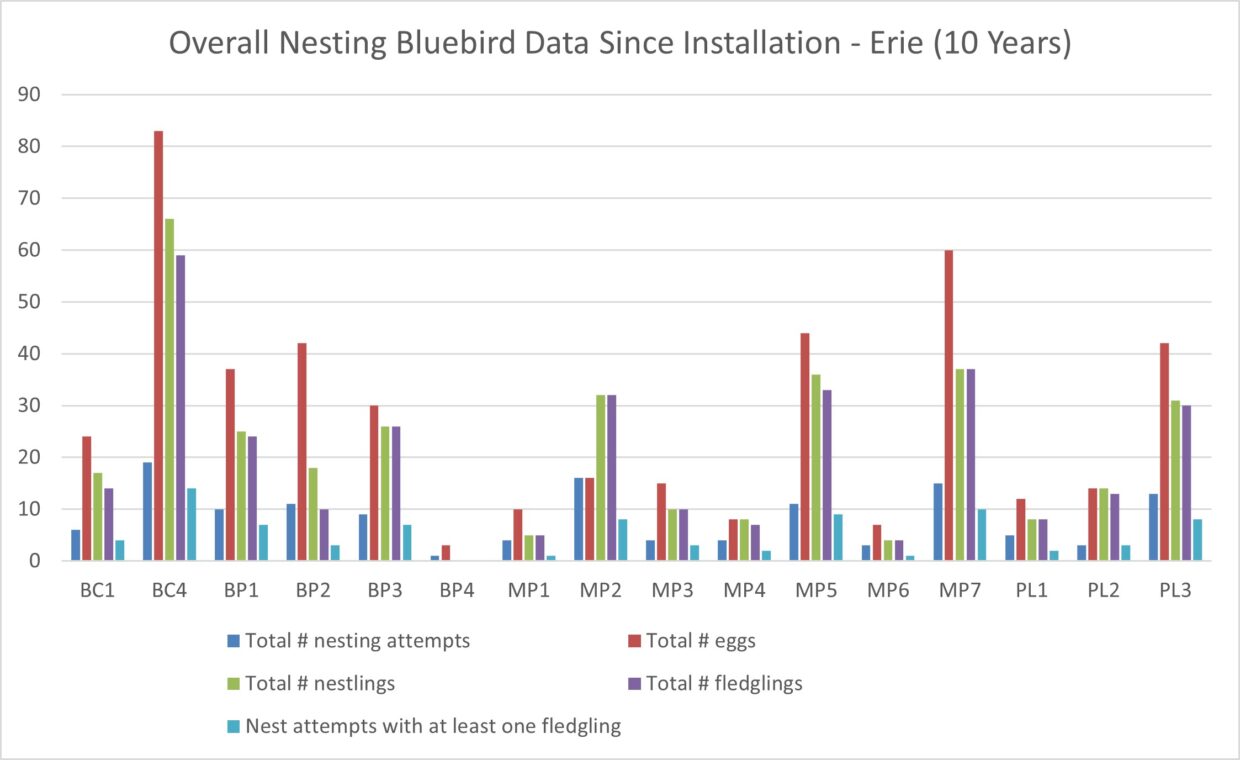
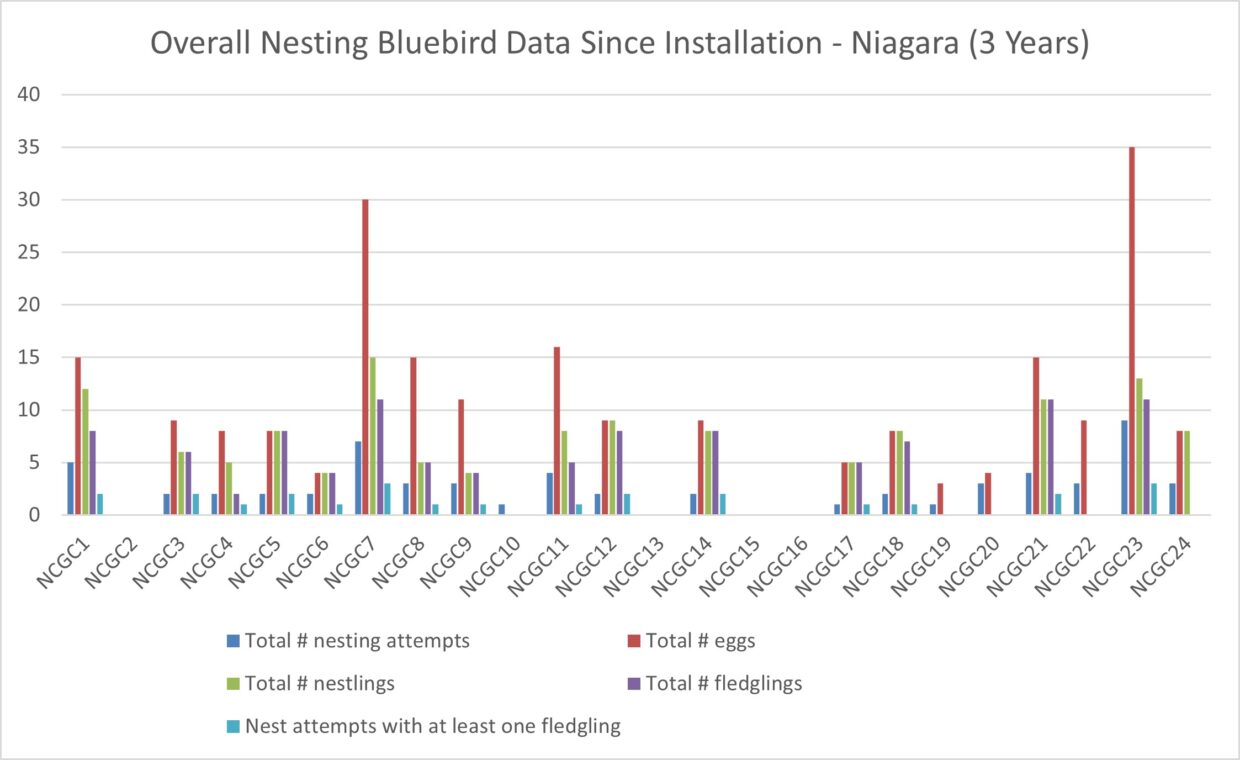
As you can see, some nest boxes are more active than others for bluebird activity.
Let’s review the nest success rate and number of fledglings for the boxes in Erie County:
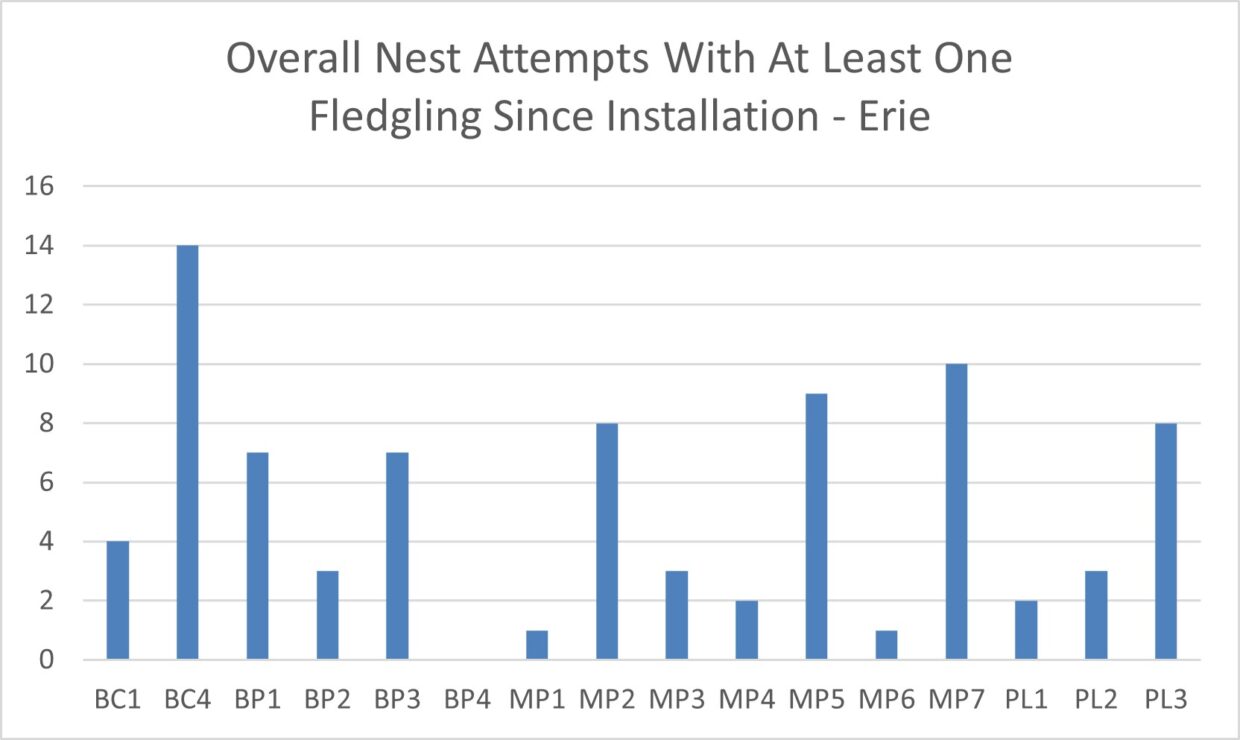
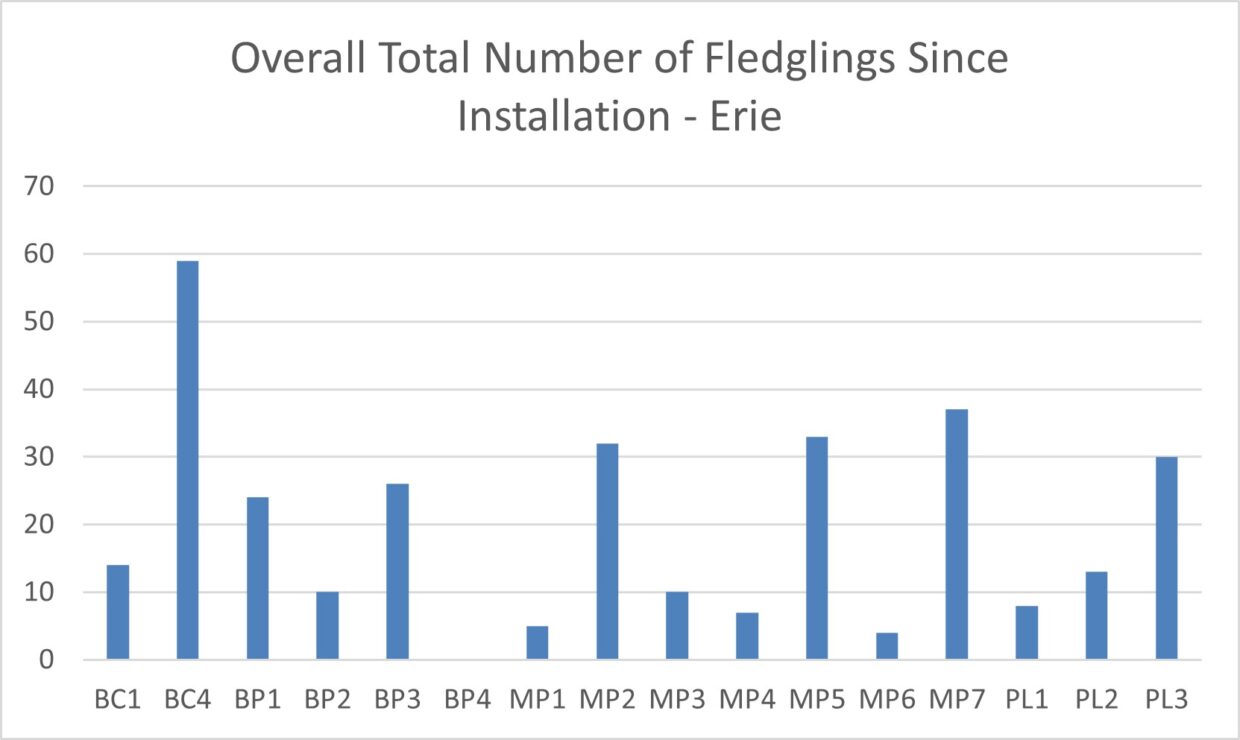
As you can see, there is a correlation between the boxes with many fledglings and those with a high success rate. Boxes BC4, MP7, and MP5 have been the most successful respectively.
Now, let’s review the nest success rate and number of fledglings for the boxes in Niagara County:
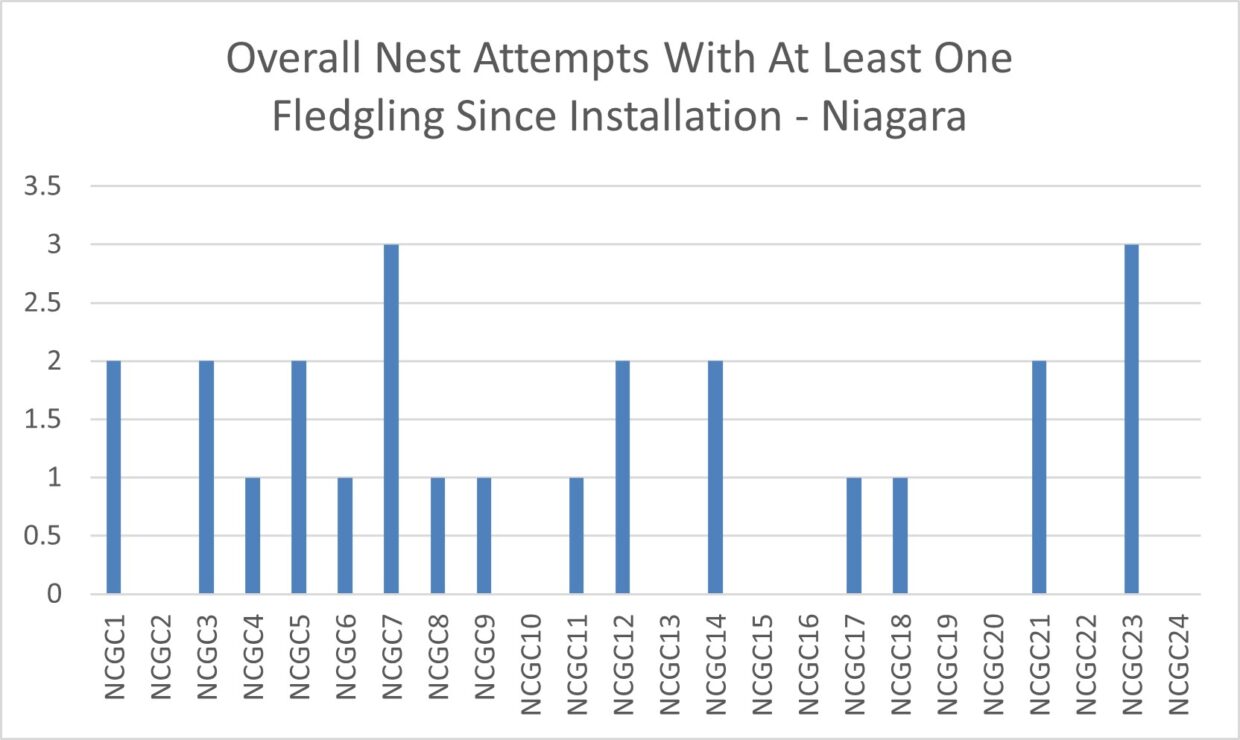
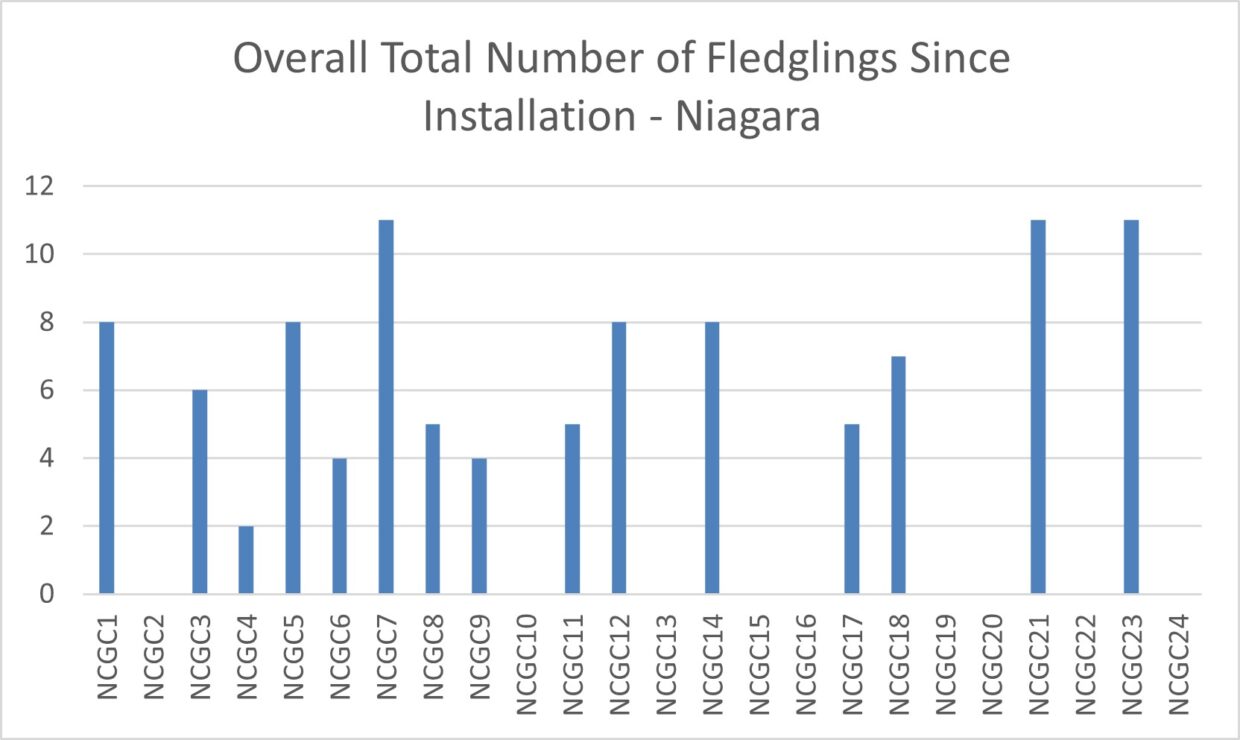
As with the previous graphs, there is a correlation between the Niagara County boxes with many fledglings and those with a high success rate. Boxes NCGC7, NCGC23, and NCGC21 have been the most successful respectively.
There are many reasons why a nestbox is successful: its general location, type of construction, and consistent monitoring are just a few. Regularly maintaining nest boxes is critical for the success of the bluebird. An unmonitored box quickly becomes overrun with invasive species. So, even though the Eastern Bluebird has come back from its endangered numbers, we want to continue to do all we can to keep our populations stable and healthy.
If you have any questions or comments about this data or our conservation efforts, feel free to contact us, and happy birding.

